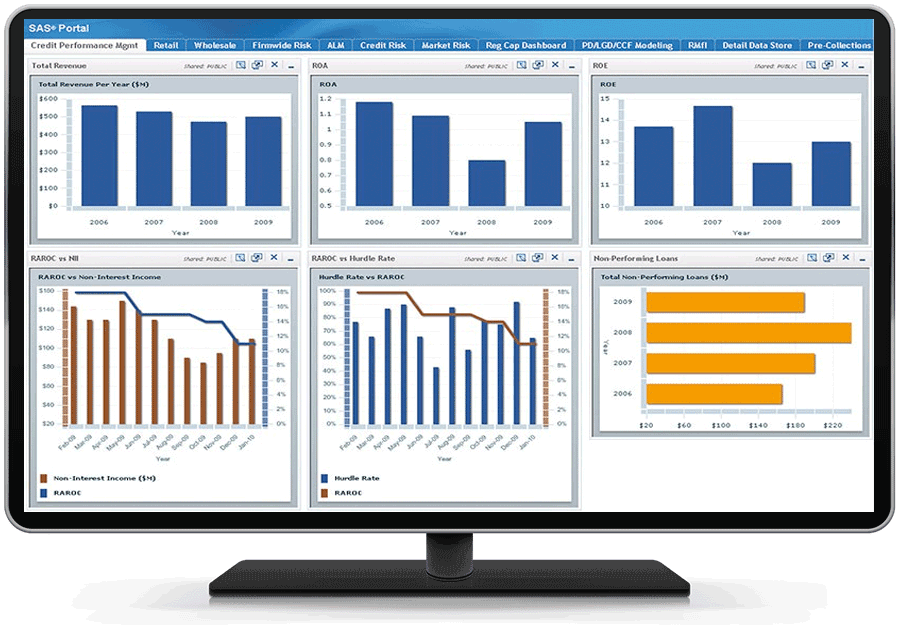
SAS® Banking Analytics Architecture
Make fact-based decisions while ensuring consistency and reducing data prep time.
Consolidate data from multiple operational systems – e.g., deposits, loans and wealth management – and make it easily accessible for analytics and reporting, so you can make decisions based on reliable analysis, not "gut feel."

Provide clear, structured information to all who need it.
Access accurate data consistently, when and where it is needed, giving you increased confidence in the accuracy and timeliness of your data. A full range of business intelligence capabilities includes an easy-to-use, web-based reporting environment for easily communicating critical business information to the right people within your organization.
Gain a complete, integrated view of all your enterprise data.
A comprehensive data dictionary covers all key banking subject areas, including customers, products, instruments, customer analytics, financial accounting and risk management. Predefined logical and physical data models serve as a single version of truth, standardizing more than 8,000 banking data elements to ensure consistent terminology and reporting throughout the organization.
Always have access to the data you need, when you need it.
From older, legacy core banking or loan origination systems to the latest online banking or wealth management platforms, SAS Banking Analytics Architecture can access and process data from virtually any hardware platform or operating system. As a result, you'll save time, shorten the learning curve and give decision makers the information they really need..
Eliminate overlapping tools and systems with one solution.
SAS Banking Analytics Architecture is a flexible, reliable and complete solution that eliminates the piecemeal approach of linking and managing technologies from different vendors. It provides lower overall cost, reduced risk and faster results.
Key Features
Banking data model
Serves as a single version of the truth, covering all key banking subject areas such as banking, investment and insurance accounts.
Data management
Access data from virtually any system, in any form, including unstructured and semi-structured data.
Reporting
Provides a web-based, interactive reporting interface for business users.
Business intelligence
Includes query capabilities for all levels of users across multiple BI interfaces.
